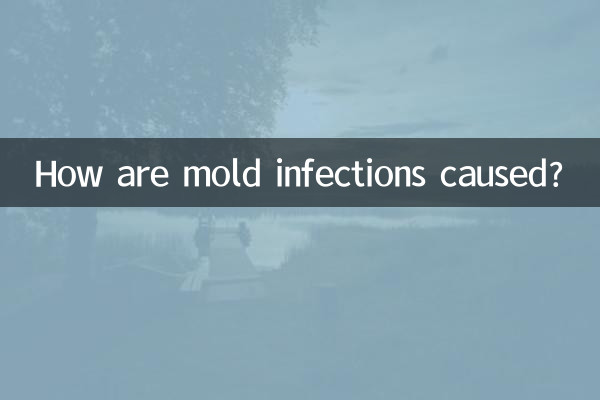How are mold infections caused?
Fungal infection is a common health problem that is more likely to occur in humid, hot and humid environments. In recent years, with climate change and lifestyle changes, topics related to fungal infection have frequently appeared in hot discussions on the Internet. This article will combine the hot topics and hot content on the Internet in the past 10 days to analyze the pathways, symptoms and preventive measures of mold infection in detail, and present it to you through structured data.
1. Common routes of fungal infection

Molds mainly infect the human body through the following ways:
| route of infection | Specific methods |
|---|---|
| airborne | Breathing in air containing mold spores, such as from humid indoor environments or moldy corners |
| contact spread | Direct contact with moldy items such as clothing, food or furniture |
| food intake | Eating moldy food, such as moldy bread, fruits, etc. |
| skin contact | Contact with mold after skin damage may cause local infection |
2. Symptoms of Fungal Infection
Symptoms of fungal infection vary depending on the site of infection and individual differences. The following are common symptoms:
| Infection site | Common symptoms |
|---|---|
| respiratory tract | Cough, wheezing, nasal congestion, sore throat, which may lead to pneumonia in severe cases |
| skin | Redness, itching, rash, and even sores |
| digestive tract | Abdominal pain, diarrhea, nausea, vomiting |
| Others | Headache, fatigue, decreased immunity |
3. Recent hot topics and discussions related to fungal infection
According to statistics from the entire network in the past 10 days, the following topics are highly related to fungal infections:
| hot topics | Discussion popularity | main focus |
|---|---|---|
| Mold grows during the rainy season | high | How to Prevent Mold in Your Home Environment |
| Moldy food causes poisoning | in | Which foods are prone to mold and how to deal with them |
| Air conditioner mold contamination | high | Air conditioning cleaning and respiratory health |
| Fungal infection in pets | low | Risk of cross-infection between pets and humans |
4. How to prevent fungal infection
The key to preventing mold infections is to control environmental humidity and maintain good hygiene:
| Precautions | Specific methods |
|---|---|
| keep dry | Use a dehumidifier to ensure indoor humidity is below 60% |
| Regular cleaning | Clean mold-prone areas such as bathrooms and kitchens weekly |
| Ventilated and breathable | Open windows every day for ventilation, especially in bathrooms and basements |
| food management | Clean up expired or moldy food promptly and avoid eating it |
| personal protection | Wear gloves and a mask when handling moldy items |
5. High-risk groups for fungal infection
The following groups of people are more susceptible to fungal infections and need special attention:
| Crowd type | Risk reasons |
|---|---|
| People with low immunity | Such as patients with diabetes, HIV infection, chemotherapy patients |
| Respiratory disease patients | Such as asthma, chronic obstructive pulmonary disease patients |
| elderly | Decreased immune function and weak resistance |
| infants | The immune system is not fully developed |
6. Summary
Although fungal infections are common, the risk can be effectively reduced through scientific preventive measures. Especially in wet seasons or special environments, you need to be more vigilant. If you or a family member has symptoms of suspected fungal infection, it is recommended to seek medical treatment promptly to avoid worsening of the condition. At the same time, pay attention to environmental health and regularly inspect areas prone to mold in your home to create a safe living space for your family.

check the details

check the details